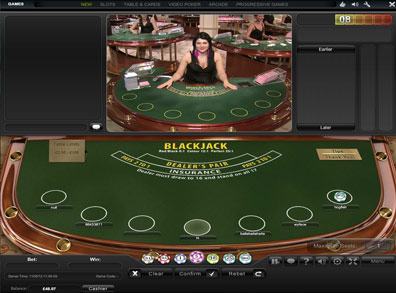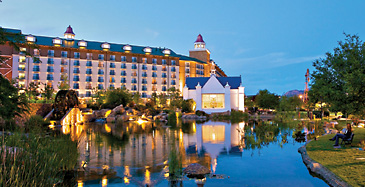The exact forerunner of blackjack remains unclear to this day. In the 16th and 17th centuries, several games seem to have emerged where the objective is to accumulate a certain ‘score’ without going over. Undoubtedly, it’s from one (or more) of these that modern-day blackjack developed. Picking out the exact source, though, is rather like identifying the ‘missing link’ that connects us to other animals. The French game of ‘Vingt-et-Un’ is commonly quoted as the game’s main source, and there are undoubtedly similarities. As in blackjack, two cards are dealt, and each one is assigned a value, the aim being to notch up a score as close as possible to 21. The ace can be worth either 1 or 11, depending on the wishes of the player. After that, though, the game veers rather wildly away.
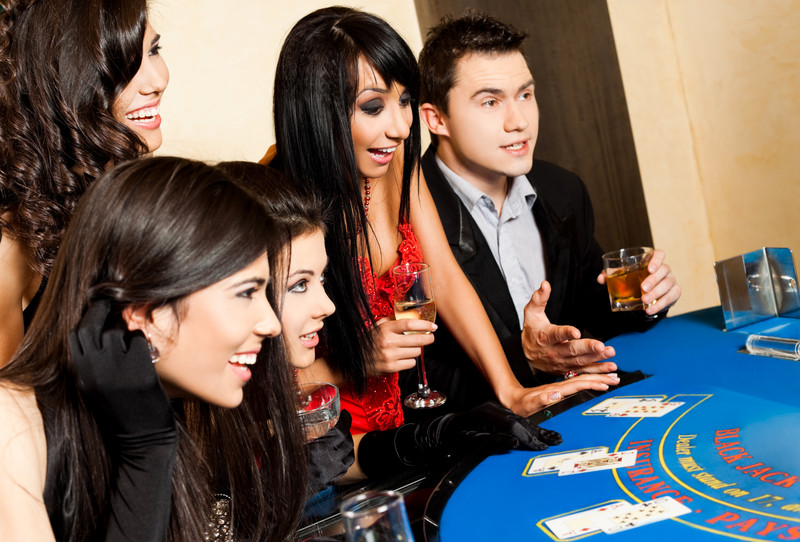 Vingt-et-Un is actually a rather more complex game than blackjack, consisting of a series of different deals – all of which have their own name. Imaginary Tens, for example, assigns all players a score of 10 plus the value of their second card. Other evocatively-titled phases (Sympathy and Antipathy, Rouge et Noir, Self and Company etc.) have the player guessing whether their cards are of a particular colour or value. The role of ‘dealer’ isn’t fixed, but switches around from player to player – the dealer is compensated through being awarded special plays (such as the ability to double their bet if they’re liking their hand) that aren’t open to the other players. Vingt-et-Un, then, has many elements in common with blackjack, but also has distinct shades of both poker and roulette. Clearly, it’s unlikely to be the direct source of blackjack.
Vingt-et-Un is actually a rather more complex game than blackjack, consisting of a series of different deals – all of which have their own name. Imaginary Tens, for example, assigns all players a score of 10 plus the value of their second card. Other evocatively-titled phases (Sympathy and Antipathy, Rouge et Noir, Self and Company etc.) have the player guessing whether their cards are of a particular colour or value. The role of ‘dealer’ isn’t fixed, but switches around from player to player – the dealer is compensated through being awarded special plays (such as the ability to double their bet if they’re liking their hand) that aren’t open to the other players. Vingt-et-Un, then, has many elements in common with blackjack, but also has distinct shades of both poker and roulette. Clearly, it’s unlikely to be the direct source of blackjack.
An alternative candidate is perhaps the game of Trente-Un or Trentuno (Thirty One), where the arbitrary figure of 31 is set as the ‘ideal’ which players are supposed to get close to. Three cards are dealt, and the ace is counted simply as an 11-pointer – no choice of value is permitted. The game is extremely old, and its origins are rather murky. Indeed, there’s even much dispute over which country ’31’ originated in. Italy is frequently cited, but that could be down to its earliest recorded mention (in the 1440s) coming from an Italian monk. It could just as easily be Spanish, though, and it has even made an appearance in French literature.
Whatever its provenance, Trente-Un is still played today. Strangely, though, the modern Trente-Un has developed a very different set of rules from its predecessor, and bears little comparison to blackjack. The original rules and spirit were preserved in a 16th century English variation, called Bone Ace. This kept the dealing of three cards and the maximum of 31, but introduced card values identical to those of blackjack, and, as in Vingt-et-Un, assigned the ace a double value of 1 or 11. The ‘Bone Ace’ of the title referred to the ace of diamonds, which would secure victory for its holder in the event of a tie. This game seems a strange conglomeration of Vingt-et-Un and Trente-Un. However, it’s remarkably similar to modern blackjack. Cut the number of cards dealt to two, and reduce the target score from 31 to 21, and you essentially have blackjack. Another Italian game, Sette e Mezzo (Seven and a Half), may have contributed the idea of automatically ‘going bust’ when the maximum score is exceeded. Mix all of these elements together, and you essentially have the modern game that we adore.
American Beginnings
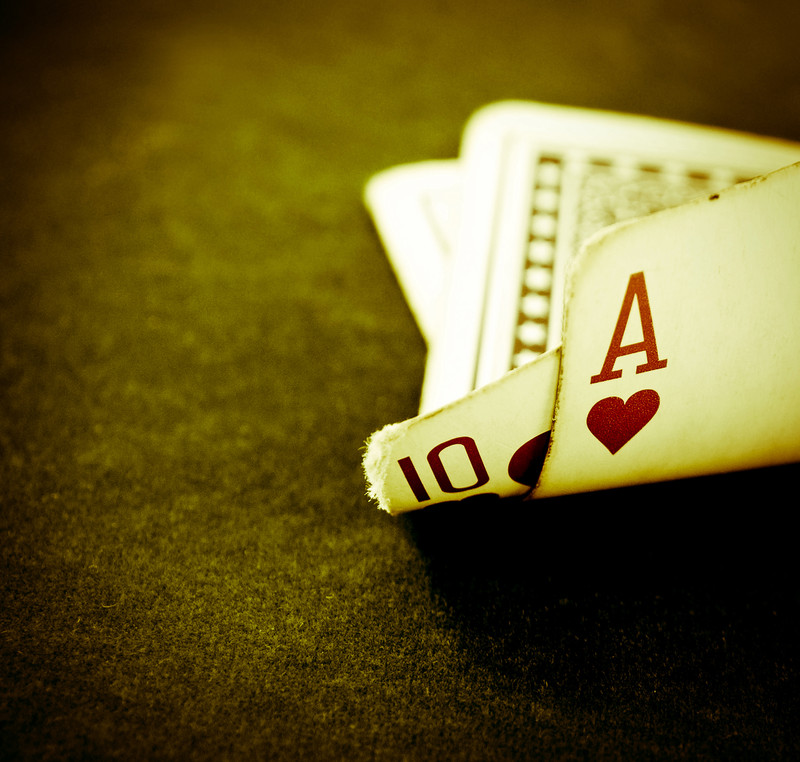 Wherever it was exactly that these juices seemed to mingle, it was likely to be somewhere in the United States in the early 19th century. Whether the game rules were carried by refugees rushing from the terror of the French Revolution, or were brought over by the American settlers themselves (perhaps under the influence of Bone Ace), they seem to have come together in the card games played in the USA in the early part of the 19th century. Gambling was illegal in many parts of the US, but that didn’t stop the rise of games. Riverboats, frequented by the well-to-do, were regular haunts for card sharps looking to make a quick buck from gullible customers. Mining towns like California, Nevada and Arizona were also strong gaming spots, as restless workers seeked a fun but unsophisticated way of unwinding after a day’s toil. For a few years, the epicentre of cards was the ‘Vingt-et-Un’ in Nevada. Taking its name from the French title of the forerunner of blackjack, this establishment was run by a woman, Eleanor Dumont, known as Madame Moustache. The promise of ‘honesty’ seems to have been the biggest draw, although this doesn’t seem to have precluded a rather large house edge. Ultimately, Eleanor Dumont lost everything after being swindled by her new husband, and supposedly spent her last few days stumbling along the dusty roads vowing to find the man who had stripped her of all that she owned – she never found him and, like many a Vegas hero, eventually took her own life.
Wherever it was exactly that these juices seemed to mingle, it was likely to be somewhere in the United States in the early 19th century. Whether the game rules were carried by refugees rushing from the terror of the French Revolution, or were brought over by the American settlers themselves (perhaps under the influence of Bone Ace), they seem to have come together in the card games played in the USA in the early part of the 19th century. Gambling was illegal in many parts of the US, but that didn’t stop the rise of games. Riverboats, frequented by the well-to-do, were regular haunts for card sharps looking to make a quick buck from gullible customers. Mining towns like California, Nevada and Arizona were also strong gaming spots, as restless workers seeked a fun but unsophisticated way of unwinding after a day’s toil. For a few years, the epicentre of cards was the ‘Vingt-et-Un’ in Nevada. Taking its name from the French title of the forerunner of blackjack, this establishment was run by a woman, Eleanor Dumont, known as Madame Moustache. The promise of ‘honesty’ seems to have been the biggest draw, although this doesn’t seem to have precluded a rather large house edge. Ultimately, Eleanor Dumont lost everything after being swindled by her new husband, and supposedly spent her last few days stumbling along the dusty roads vowing to find the man who had stripped her of all that she owned – she never found him and, like many a Vegas hero, eventually took her own life.
The game of Vingt-et-Un (or 21) makes occasional appearances in early American literature. It doesn’t really seem to blossom until the 20th century, though, at which point it springs, fully-formed, into life in Indiana. That’s where the first ‘bank’ game seems to have taken place, and also where the rewards for drawing a natural 21 (an ace plus a card with a value of ten) were changed to 3 to 2. It wasn’t until gambling became legal in the 1930s that the game really took off, though. That was largely down to Nevada casinos trying to promote it with a new bonus – if your hand included the Ace of Spades, plus either the Jack of Spades or the Jack of Clubs, your hand was called a ‘blackjack’, and a special payout of 10 to 1 was dispensed. This change was short-lived, and casinos quickly went back to the old 3 to 2 rules. Nonetheless, a new ‘American’ phrase had been coined, and ‘blackjack’ finally replaced the old French name.
Blackjack and the Card Counting Revolution
By the 1960s, blackjack was big business in casinos up and down the land. Now with its rules firmly established, there didn’t seeem to be far for it go. Blackjack, however, was about to take a new and totally unexpected turn. Most establishments operating blackjack games had changed the rules to ensure that they had some sort of edge over the players. The dealer has an automatic advantage in being able to ‘play’ last of all – the player, in contrast, has to aim for a winning hand without knowing exactly what it is that they’re going to have to beat. This advantage, though, is essentially negated by giving the player an increased 3 to 2 payout when they draw a blackjack. Once you take into account this payout, plus the small effect of features like doubling down and splitting, the house edge is very close to zero when the game is played with a single deck. In order to restore an edge, casinos play with more than one deck. Each new deck slightly decreases the chance that the player can draw a blackjack – meaning that they’re getting the compensatory 3 to 2 payout less often. The difference is very small, but playing with eight decks (rather than just the one) adds around 0.48% to the house edge – if blackjack was played using standard rules and a single deck, there would be next to no house edge.

So what can players do about this edge? Well, most early practitioners assumed the only solution was to be dishonest, and use trick devices and sleight of hand to con the dealer and other players. In 1962, though, Edward O Thorp published his bestseller, Beat the Dealer, and showed that there was another way. This involved ‘counting cards’, assigning values to each card and then keeping a running total of the ‘worth’ of the remaining cards in the pack. If a large number of low-value cards had been drawn, this made it more likely that the majority of those cards remaining would be high-value. If you knew lots of high-value cards were likely to turn up, you could increase your bet size, knowing that you were far more likely to draw blackjacks, and so gain a large share of the lucrative 3 to 2 payouts. For the most part, the cards coming up were little more than random. Occasionally, though, there were clear trends that very patient players could follow for a profit and a small edge of their own.
Edward O Thorp’s book featured some of the ‘simpler’ methods of counting cards. Even these methods, though, were quite tricky to execute properly. What the book did, though, was to supply the game with a mathematical foundation, and to show that it could be beaten legally. Huge numbers of card players flocked to the blackjack tables in its wake, looking to take down the casinos. Most of these people failed miserably, but amongst the few success stories was maths genius Lawrence Revere. Building on Thorp’s work, Revere produced his own version, introducing a slew of new counting methods – including the Revere Five Count and Ten Count, and the Revere Plus-Minus systems. Thorp was so impressed that, when a new edition of his book was brought out a few years later, he insisted on adding new material that explained the Revere systems in detail.
Card Counting Teams
Casinos were quick to take note of card counting. The practice wasn’t illegal, but casinos have the right to ban players from their establishments, and they insisted on exercising this right whenever they identified somebody who was counting cards. The telltale signs were fairly easy to spot, as players would suddenly raise their stakes significantly, and for no apparent reason, and would then have a period of success before dropping their stakes again. Clearly, a more subtle approach needed to be taken.
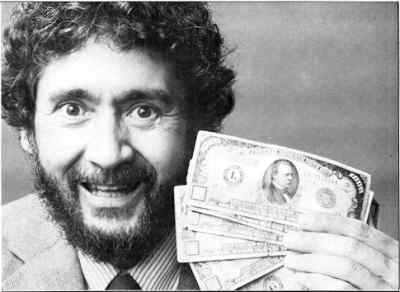 It was Ken Uston who came up with the idea of ‘teamwork’. Counters would work in groups. Most of the group members would act as the ‘spotters’, with just one of the members designated the ‘big player’. The ‘spotters’ would play games for small stakes while simultaneously counting cards. If they were playing at a table that was likely to see a rush of high cards, they would send a subtle signal to the ‘big player’, who would then come and join the table. Since the ‘big player’ appeared to be using the same large stakes at every table, and since the ‘spotters’ carried on staking at the same amounts, there were no telltale signs for the casino to pick up on.
It was Ken Uston who came up with the idea of ‘teamwork’. Counters would work in groups. Most of the group members would act as the ‘spotters’, with just one of the members designated the ‘big player’. The ‘spotters’ would play games for small stakes while simultaneously counting cards. If they were playing at a table that was likely to see a rush of high cards, they would send a subtle signal to the ‘big player’, who would then come and join the table. Since the ‘big player’ appeared to be using the same large stakes at every table, and since the ‘spotters’ carried on staking at the same amounts, there were no telltale signs for the casino to pick up on.
This concept of teamwork was quick to take off, and bands of card counters started working casinos up and down the country. The most successful of these was the M.I.T. Team. Led by Bill Kaplan, this group consisted of gamblers from the Massachusetts Institute of Technology, and supposedly amassed millions over the course of the 1980s. Eventually though, the casinos became adept at identifying M.I.T. members and banning them. The constant grind of card counting (along with the training and drilling needed to keep counting techniques sharp) took its toll on the players as well, and the long hours spent spinning out a relatively small edge made it tedious work. By the end of the 80s, the team decided to disband. Many of the members would go on to further success, though – Kaplan himself established his own $1 million fund, for instance.
The Future
The days of card counting seem now to be numbered, with many casinos bringing in regular deck refreshes and shuffles, so that counting is rendered essentially worthless. The rise of online blackjack is another nail in its coffin, as these simulations make it easy to maintain a full eight decks at all times. Whether the rise of online ‘live dealer’ blackjack can bring back card counting in some form or other remains to be seen. There will be opportunities for using technology to work out what may happen, although these aids are more likely to be of use in roulette, where the physics of the wheel can, to some extent, be mapped, and the likely outcome predicted.
Digital casinos, though, are finding additional ways to inject excitement, bringing out new flavours that feature extra variations, or that increase tension with ever-building progressive bonuses. The emergence of tournament play should also get blackjack players flocking back to tables. What is sure is that, after those days of uncertain origins, blackjack is now very much a glittering star in the casino firmament. As such, it’s likely to be with us in strength for a long time to come.
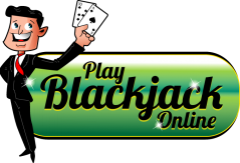
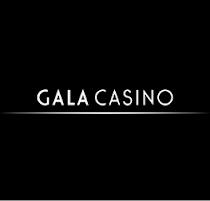
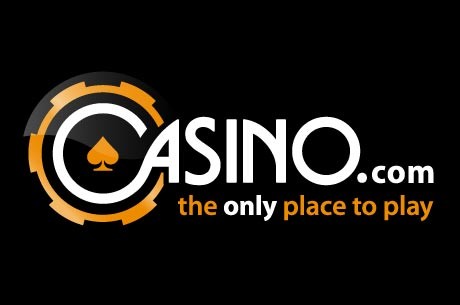
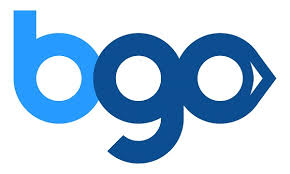
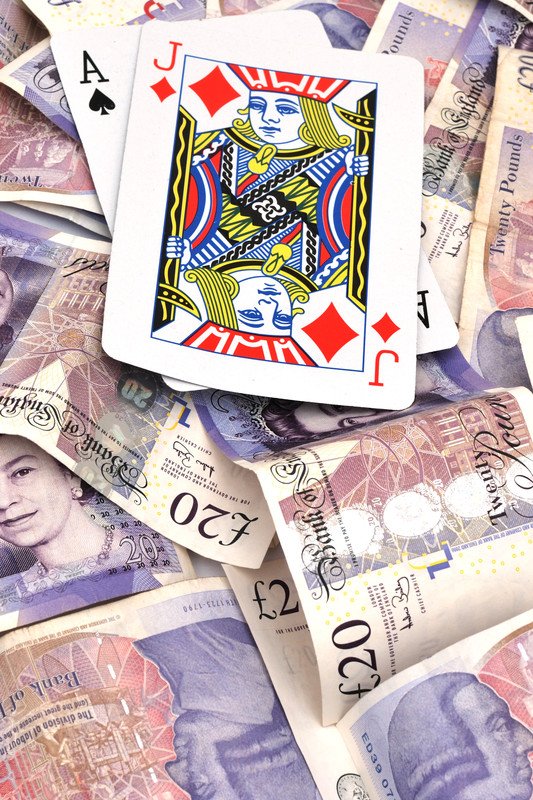 3. So what is correct strategy? Your actions should be decided partly on what the dealer has. If they draw a lower card (6 and below), there’s a much higher chance that they’ll go bust trying to get to 17. The 5 is the most dangerous card from the dealer’s point of view, as there’s a 43% chance they’ll go bust if they start by drawing this card, and a 42% chance in the case of the 6. These figures fall to 35%, 38% and 40% for the 2, 3 and 4 respectively. If the dealer has a 6 or lower, you can stand on a relatively modest hand of 12 or 13, as there’s a good chance of the dealer going bust.
3. So what is correct strategy? Your actions should be decided partly on what the dealer has. If they draw a lower card (6 and below), there’s a much higher chance that they’ll go bust trying to get to 17. The 5 is the most dangerous card from the dealer’s point of view, as there’s a 43% chance they’ll go bust if they start by drawing this card, and a 42% chance in the case of the 6. These figures fall to 35%, 38% and 40% for the 2, 3 and 4 respectively. If the dealer has a 6 or lower, you can stand on a relatively modest hand of 12 or 13, as there’s a good chance of the dealer going bust.